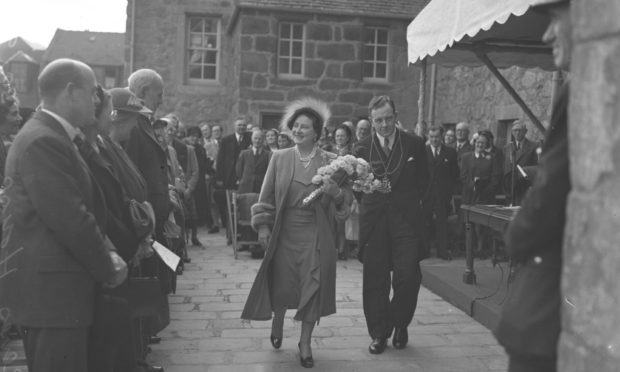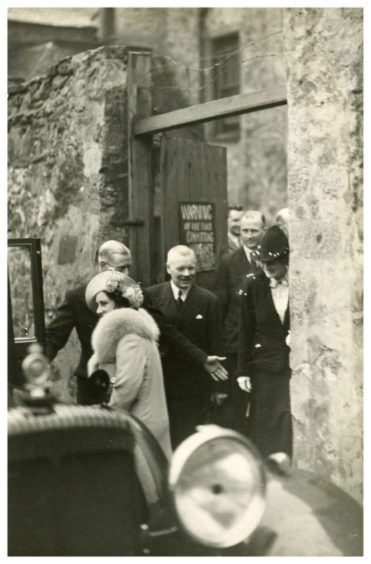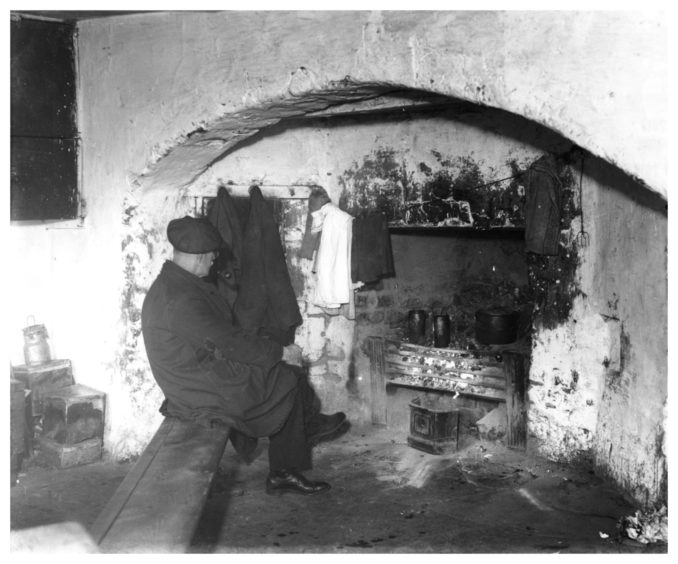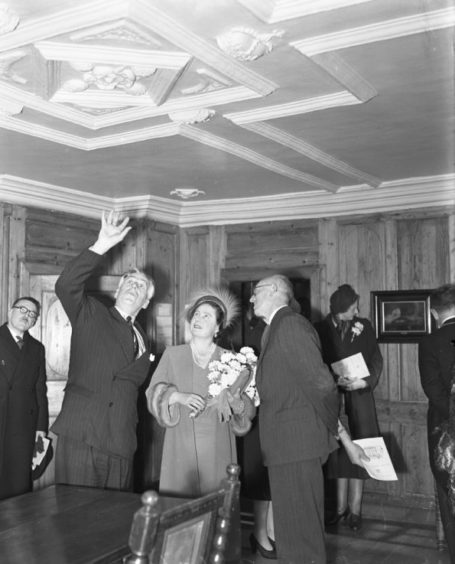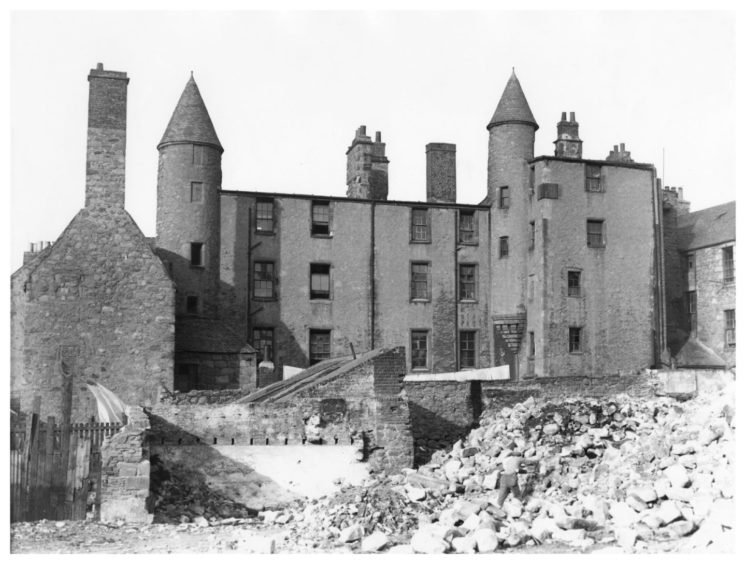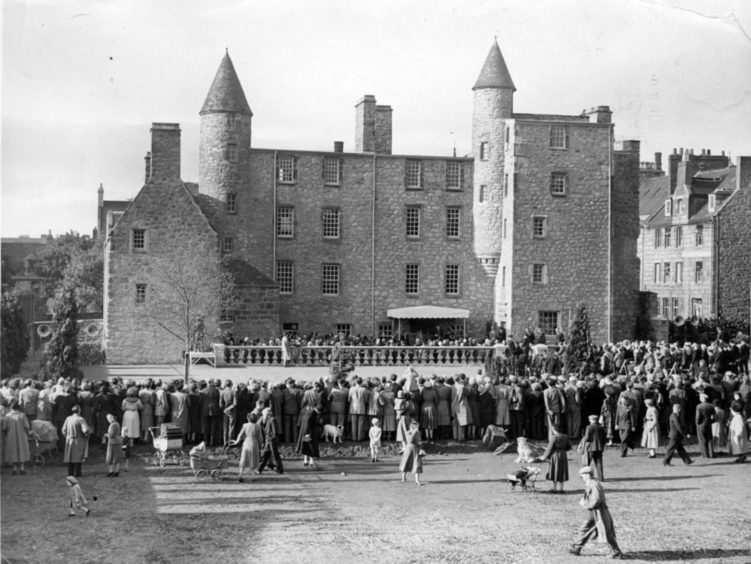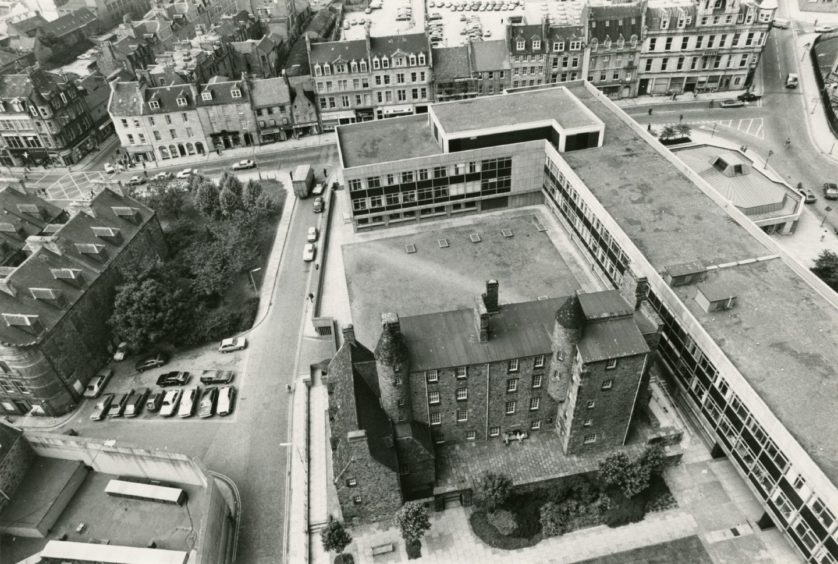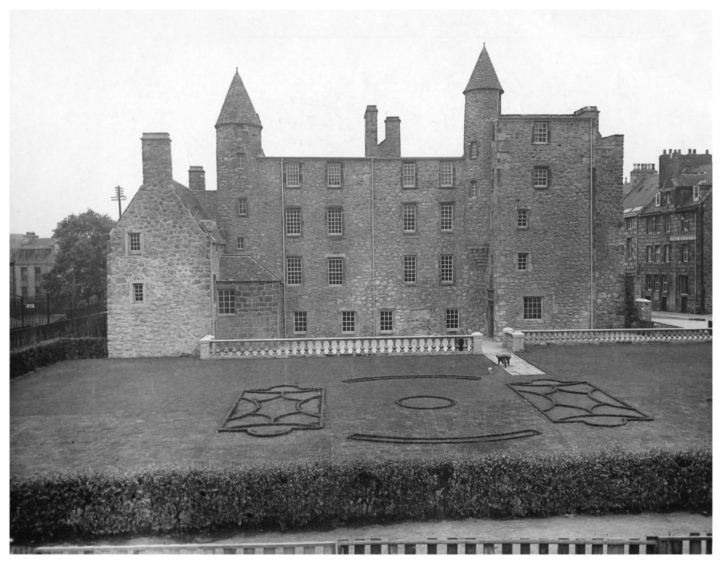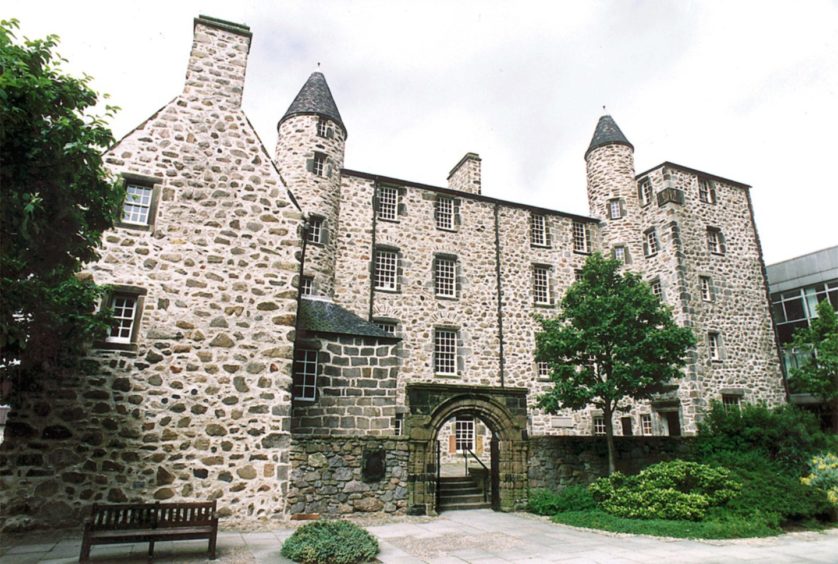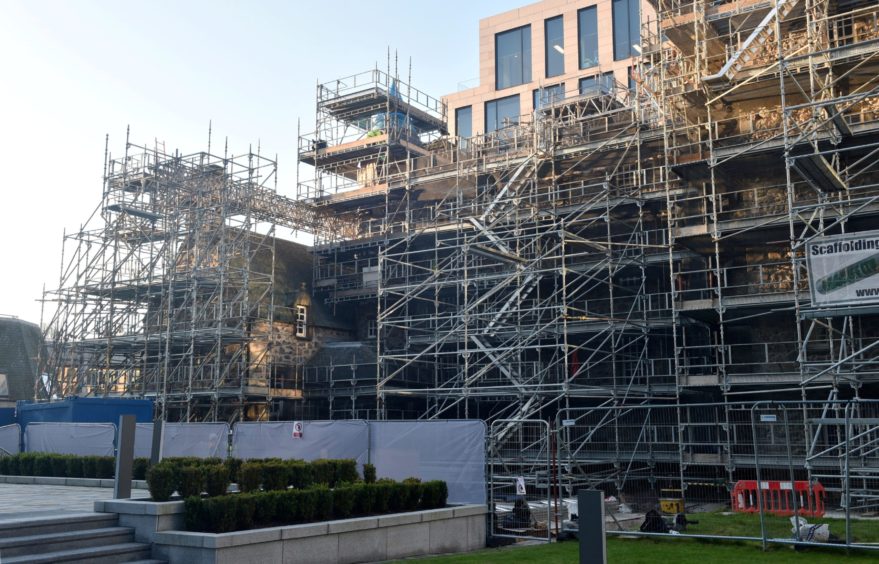Sitting beneath a cocoon of scaffold and sheets, Provost Skene’s House is like a chrysalis waiting to burst into new life as Aberdeen’s Hall of Heroes.
When it eventually emerges as a celebration of the great and the good of the Granite City, it won’t be the first time this ancient building has seen a rebirth.
On September 30 1953, the Queen Mother opened a refurbished Provost Skene’s House as a museum telling the story of life in bygone centuries in Aberdeen.
This was not a mere royal ribbon cutting.
It was a triumphant moment for the Queen Mother who had been instrumental in saving the edifice from demolition some 15 years earlier.
A model hostel for homeless men
But in 1938 she visited as the Queen, and the building, then known as Cumberland House, was not a historic treasure. It was a crumbling doss house for homeless men.
And it was under the threat of the wrecking ball, as the city’s decaying and unhygienic slums around Guestrow were cleared away.
But even as she met the residents in their grimy and dilapidated quarters – they were given an hour’s notice of their royal visitor – the Queen was drawn to the architectural features and rich history of one of the oldest buildings in Aberdeen.
Built in 1545 it was home to Lord Provost George Skene in the late 1600s. He commissioned the turreted building’s ornate carved plaster ceilings.
In 1746, the opulent townhouse was occupied by the Duke of Cumberland on his march to the Battle of Culloden.
His men plundered the wine cellar and stole many valuables.
It was known as Cumberland House for the next 200 years.
Grime and soot
By the mid-19th century, the house was just another piece of the patchwork of poor slums sitting around Guestrow and by the 1930s was due to be swept away in the months after the Queen’s visit.
Yet during her tour, the royal guest was fascinated by the plaster cast ceilings. In one room she was shown the coat-of-arms for Sir George Skene – even if her guide for the day had to use a torch to show up the details in the dim, soot-coated room.
An account of the visit in the Press & Journal reported: “So delighted was the Queen with the architectural features of Cumberland House that Her Majesty twice expressed the hope that the building would be preserved.
“It would be a shame to destroy it,” the Queen said.
“It is such an interesting old building.”
That interest then became a passion, with the Queen taking a personal interest in the growing public clamour to save Provost Skene’s House and its precious links with Aberdeen’s past.
The public campaign was a huge success and instead of disappearing, the grand structure was transformed to a local history museum, with galleries depicting life in the 17th, 18th and 19th centuries.
On September 30 1953, hundreds of people gathered around the building and its surrounds to catch a glimpse of the Queen Mother as she did the honours of declaring Provost Skene House’s open.
Concrete carbuncle
In her speech to inaugurate the “period house”, she said: “It is indeed a great pleasure for me to be here today to see in the the restoration of this fine house, the fulfilment of a dream which I have long cherished.”
And so began the next chapter for the ancient building, as a much-loved attraction for decades to come – even when it was hidden behind the concrete carbuncle of St Nicholas House.
But it wasn’t always plain-sailing.
In 1986, at a time of swingeing council cuts, it was proposed to dispose of the 16th-century building to save £5,000.
Once again, the Queen Mother was asked to help out.
James Towers-Norris, a senior attendant at the house, was so outraged by the closure plans, he wrote to the Queen Mother asking her to intervene for the second time in 50 years.
Her private secretary wrote back, saying: “Queen Elizabeth can well understand the distress you feel at the prospect that Provost Skene’s House may be closed, for she shares with you a long-standing interest in this historic building which the Queen Mother was so pleased to open after its restoration.
“As I am sure you will appreciate, it is not within Her Majesty’s province to intervene personally in such matters, but at the Queen Mother’s suggestion I am making inquires of the relevant authorities.”
Her interest and those inquiries – along with renewed strong and vocal public pressure to save the building – paid off and Provost Skene’s House survived again.
New chapter
Fast forward to 2020 and the writing of a new chapter, with work under way to create a Hall of Heroes within the walls of the house.
Although delayed due to the coronavirus pandemic, when it opens the new attraction will feature 50 notable Aberdonians from all walks of life.
They will include the Scotland the What? team, Annie Lennox, Dame Evelyn Glennie, Denis Law, Stuart MacBride, Bishop William Elphinstone and Dugald and May Baird.
Even adopted Aberdonians will be included, with Aberdeen FC and Manchester United legend Sir Alex Ferguson set to have pride of place, too.
It will be a fitting use for one of the Granite City’s most historic and iconic landmarks – saved by the heroic efforts of many people over the years, not least the Queen Mother.
